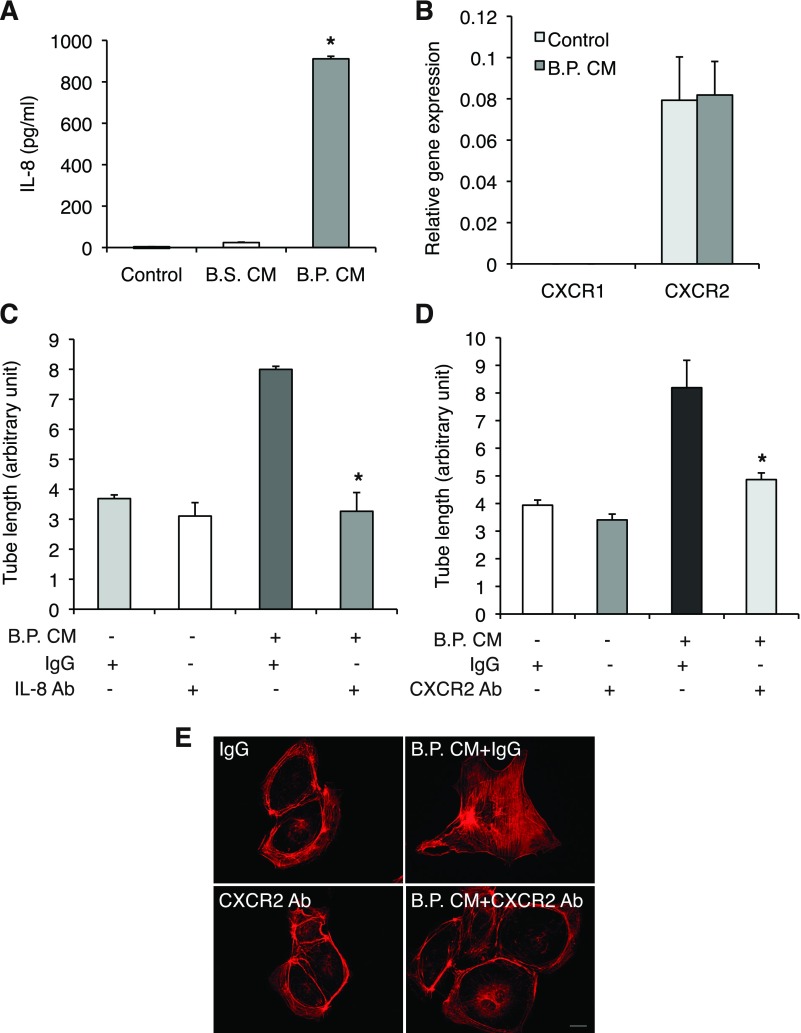Fig. 2.
B.P. CM enhances angiogenesis of HIMECs through activation of the IL-8/CXCR2 pathway. A: the result of ELISA for IL-8 in HIMEC supernatant showed that B.P. CM, not B.S. CM, increased IL-8 production. Error bars represent SD of triplicate samples. Similar results were observed in 3 independent experiments; *P < 0.01 vs. B.S. CM. B: quantitative PCR of CXCR1 and CXCR2 in HIMECs indicates that only CXCR2 is expressed in HIMECs. Moreover, B.P. CM did not alter the expression profile. Error bars represent SD of triplicate samples. Similar results were observed in 3 independent experiments. NCM460 cDNA was used as a calibrator and GAPDH was included as the internal control of PCR. C and D: tube assays of HIMECs were performed on Matrigel with B.P. CM along with IL-8 (0.5 μg/ml)- or CXCR2 (5 μg/ml)-neutralizing antibodies or their isotype control goat IgG or mouse IgG, respectively. B.P. CM-induced angiogenesis was reduced in the presence of IL-8- or CXCR2-neutralizing antibodies, suggesting that angiogenic effect of B.P. CM is IL-8/CXCR2 dependent. Error bars represent SD of triplicate samples. Similar results were observed in 3 independent experiments; *P < 0.05 vs. IgG isotype control. E: stress fiber polymerization was assessed in HIMECs stimulated with B.P. CM along with CXCR2 neutralizing antibody (5 μg/ml) or IgG control. F-actin was detected by staining rhodamine-phalloidin. B.P. CM strongly increased stress fiber assembly, but neutralizing CXCR2 blocked it. Bar, 20 μm.

